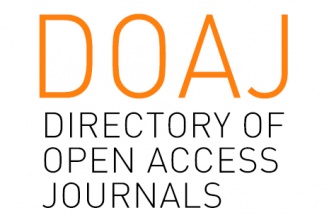The Relationship Between Table and Chair Size and Ergonomics Studies In Elementary Schools
Abstract
Ergonomics is a science that discusses the harmony of all forms of equipment when carrying out activities and in a state of rest with individual abilities and limitations, both physically and mentally, which is expected to be able to provide a better quality of life in a complex manner. This study examines the relationship between table and chair sizes ergonomically and anthropometric measurements in elementary schools. The goal was to find out the relationship between table and chair size ergonomically and anthropometric measurements affecting the comfort and health of students. at State Elementary School 11 Bathin Solapan, Bengkalis Regency, Riau Province. By using a descriptive qualitative approach, which is literature research. The findings of this study show that the facilities of the 11 Bathin Solapan State Elementary School. The results of this study show that the table and chair facilities at the 11 Bathin Solapan State Elementary School have not met ergonomic standards and anthropometric measurement standards, this causes uncomfortable posture and has the potential for health problems in students. These findings emphasize the importance of applying ergonomic principles in the design of table and chair facilities to support students' health and learning achievement. The importance of improving the design of tables and chairs to be in accordance with the concept of ergonomics and anthropometry, so that it can improve comfort, health, and effectiveness in the learning process at school.
Keywords
Full Text:
PDFReferences
Azizah, C. P. N., & Isnaini, R. L. (2023). Building an ergonomics conceptual framework: Identification of compliance with educational facilities and infrastructure standards. Jurnal Akuntabilitas Manajemen Pendidikan, 11(1), 95–104. https://doi.org/10.21831/jamp.v11i1.58162
Desmyanti, Irawan, R., Astiarani, Y., & Heidy. (2021). Kesesuaian Ergonomi Meja Belajar Dengan Data Antropometri Siswa Di Sekolah Dasar Jakarta Utara. 6(1).
Devinasari, N., Wibowo, M., & Suprobo, F. P. (2019). Studi Antropometri Siswa Sekolah Dasar Negeri untuk Desain Mebel Ruang Kelas yang Ergonomis di Kecamatan Wonocolo, Surabaya. Intra, 7(2), 493–502. https://publication.petra.ac.id/index.php/desain-interior/article/view/8959
Dimensi, I. S., Dan, M., Sekolah, K., Baskoro, R. W., Studi, P., Masyarakat, K., Kesehatan, F. I., & Surakarta, U. M. (2012). Naskah pubikasi.
Fajar Baichuni, M. (2019). Hubungan Meja dan Kursi Ergonomis Dengan Kenyamanan Posisi Duduk Siswa Sekolah YPAN Bhina Putera Surakarta. Unair.
Fitri, M. (2018). Aplikasi Monitoring Perkembangan Status Gizi Anak Dan Balita Secara Digital Dengan Metode Antropometri Berbasis Android. Jurnal Instek, 2(2), 140.
Herwanto, D., Nugraha, A. E., & Kusnadi, K. (2018). Kajian Aspek Ergonomi pada Laboratorium Komputer untuk Meningkatkan Kenyamanan Belajar Siswa. Jurnal Teknologi Rekayasa, 3(1), 1. https://doi.org/10.31544/jtera.v3.i1.2018.1-10
Hidayat, R., Ag, S., & Pd, M. (n.d.). Ilmu Pendidikan Konsep, Teori dan aplikasinya.
I Made Sutajaya, P. W. M. (2016). Ergonomi Dalam Pembelajaran Menunjang Profesionalisme Guru Di Era Global. JPI (Jurnal Pendidikan Indonesia), 5(1), 82. https://doi.org/10.23887/jpi-undiksha.v5i1.8933
Idkhan, M., & al, et. (2021). Analisis Ergonomi. In Analisis Ergonomi.
Irvan, S. S. M., Industri, S. T., Pgri, U. I., Nangka, J., Tb, N., & Tanjung, S. (2017). Yang Ergonomis Untuk Rumah Petak Di Jakarta. Ikraith-Teknologi, 1(58), 9–15.
Kurniawan, B. K., Fajarwati, A., & Nangnoy, O. (2018). Penerapan Ergonomi Dalam Perancangan Furnitur Mata Kuliah Df Iv Desain Interior Di Universitas Bina Nusantara Jakarta. Atrat, 6(1), 42–48.
Mahawati, E., Yuniwati, I., Ferinia, R., Rahayu, P. P., Fani, T., Sari, A. P., Setijaningsih, R. A., Fitriyatinur, Q., Sesilia, A. P., Mayasari, I., Dewi, I. K., & Bahri, S. (2021). Analisis Beban Kerja Dan Produktivitas Kerja dan Produktivitas Kerja. In Yayasan Kita Menulis.
Mahira, E. D. (2019). Perancangan Fasilitas Belajar Dan Bermain Yang Ergonomis Bagi Anak-Anak Paud. Vastuwidya, 1(2), 79–86.
Makomulamin, M., Sari, N. P., & Sridefina, F. (2023). Implementation of Anthropometry on the Design of Study Tables and Chairs in Pekanbaru 17 Public Elementary School Students Against the Prevention of Musculoskeletal Disorders (MSD’s). Jurnal Pengabdian Kesehatan Komunitas, 2(3), 255–262. https://doi.org/10.25311/jpkk.vol2.iss3.1395
Miftah, M., & Lamasitudju, C. A. (2022). Penerapan Qugamee (Quiz dan Game Edukasi) Interaktif pada Pembelajaran IPA-Fisika Menjadi Lebih Menyenangkan dengan Menggunakan Wordwall. Jurnal Kreatif Online (JKO), 10(1), 75–84. http://jurnal.fkip.untad.ac.id/index.php/jko
Mutmainah, M., & Sari, M. (2018). Perancangan Alat Bantu Alat Pemantau Area Produksi Yang Ergonomis Dengan Metode Value Engineering (Studi Kasus Pt Bt). JISI: Jurnal Integrasi Sistem Industri, 5(1), 51–62. https://jurnal.umj.ac.id/index.php/jisi/article/view/2597
Nurfirdaus, N., & Sutisna, A. (2021). Lingkungan Sekolah dalam Membentuk Perilaku Sosial Siswa. Naturalistic : Jurnal Kajian Penelitian Pendidikan Dan Pembelajaran, 5(2b), 895–902. https://doi.org/10.35568/naturalistic.v5i2b.1219
Prianto, A., & Putri, T. H. (2017). Pengaruh Ketersediaan Fasilitas Belajar, Dukungan Orang Tua Yang Dirasakan Terhadap motivasi dan Prestasi Belajar Siswa SMA PGRI Ngimbang Lamongan. Jurnal Pendidikan Ekonomi, Kewirausahaan, Bisnis, Dan Manajemen (JPEKBM), 1(2), 13–38.
Putri, R. S. (2014). Hubungan Ukuran Meja dan Kursi Ergonomis dengan Kenyamanan Melalui Posisi Duduk Murid Taman Kanak-kanak Dewi Sartika Surabaya. BioKultur, III(1), 277–291.
Santosa, I. G. (2016). Pengaruh Penerapan Ergonomi Pada Fasilitas Kerja Effect of Application of Facilities Working Ergonomics Worker Productivity of Wrapping Dodol. Journal Logic, 15(2), 106–111.
Saputra, D. N., Ariningsih, K. A., Wau, M. P., Noviyani, R., Awe, E. Y., & Firdausiyah, L. (2021). Pengantar Pendidikan. In CV. Pustaka Learning Center (Issue December).
Setiadi, A., & Kusumatatwa, I. (2023). Estetika Ergonomi Seni Perabot Keris Gagrak Yogyakarta. 20(1), 43–61.
Sudibyo, N. A., & Nugroho, R. A. (2020). Survey of Learning Facilities and Infrastructure for Physical Education, Sports and Health in Junior High Schools in Pringsewu Regency in 2019. Journal Of Physical Education, 1(1), 18–24.
Suhartini. (2020). Pengembangan Produk Meja Belajar Multifungsi dengan Menggunakan Metode Quality Function Deployment dan Antropometri. Tecnoscienza, 4(2), 302–318.
Susanti, L., & Aulia, N. (2016). Evaluasi Kenyamanan Termal Ruang Sekolah SMA Negeri di Kota Padang. Jurnal Optimasi Sistem Industri, 12(1), 310. https://doi.org/10.25077/josi.v12.n1.p310-316.2013
Sutanjaya. (2016). Ergonomi Dalam Pembelajaran Menunjang Profesionalisme Guru Di Era Global. 5(1), 82–96. https://doi.org/10.25077/josi.v12.n1.p310-316.2013
Taifa, I. W., & Desai, D. A. (2017). Anthropometric measurements for ergonomic design of students’ furniture in India. Engineering Science and Technology, an International Journal, 20(1), 232–239. https://doi.org/10.1016/j.jestch.2016.08.004
Wahyudin, W., Herwanto, D., & Nugraha, B. (2020). Redesain Tata Letak Taman Bermain Outdoor Santri Raudhatul Atfal dengan Metode Design Thinking yang Ergonomis. Performa: Media Ilmiah Teknik Industri, 19(1), 69–76. https://doi.org/10.20961/performa.19.1.42600
Widagdo, J. (2019). Ornamen Jepara Sebagai Setruktur Bentuk Pada Penciptaan Meja Konsul. Jurnalsuluh, 2(1), 58–68.
Yusuf, M., Simanjuntak, RA, & Rahmawati, N. (n.d.). Perancangan Ulang Meja Belajar Mahasiswa Menggunakan Metode Rekayasa Nilai dan Pendekatan Ergonomi. Jurnal Teknologi, 2(14), 186–191. https://doi.org/https://doi.org/10.34151/JURTEK.V14I2.3629
Zed, M. (2008). Metode Penelitian Kepustakaan. Yayasan Obor Indonesia. https://books.google.com/books/about/Metode_peneletian_kepustakaan.html?hl=id&id=iIV8z wHnGo0C
DOI: http://dx.doi.org/10.18415/ijmmu.v12i8.5910
Refbacks
- There are currently no refbacks.
Copyright (c) 2025 International Journal of Multicultural and Multireligious Understanding

This work is licensed under a Creative Commons Attribution-NonCommercial-NoDerivatives 4.0 International License.
https://ijmmu.com
editor@ijmmu.com
facebook.com/ijmmu
Copyright © 2014-2018 IJMMU. All rights reserved.



































